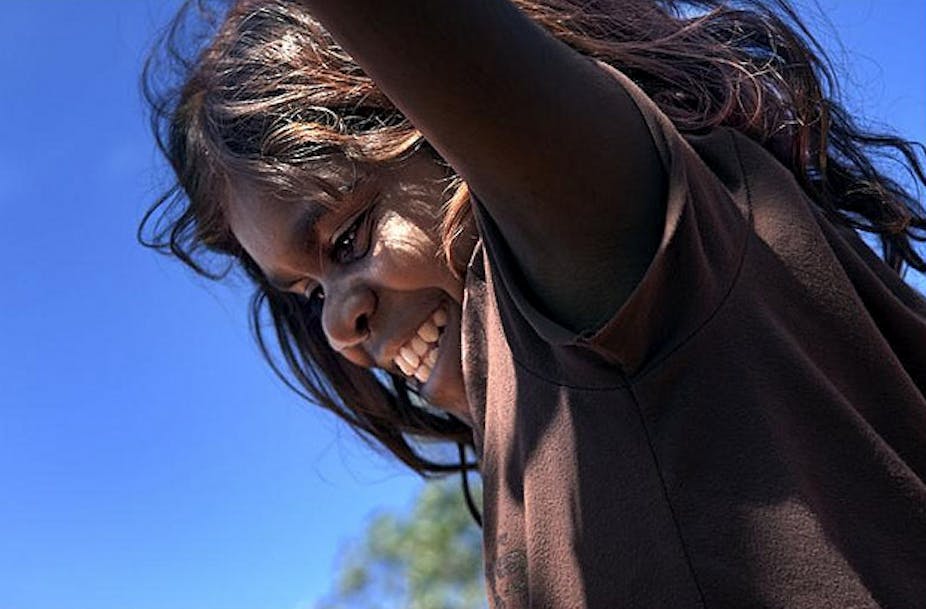It is not often that the opportunity comes along to make a real difference, but a new report into Indigenous languages in Australia has the potential to do just that.
Our Land, Our Languages has already been likened to the momentous Mabo decision. But where Mabo helped change our legal and cultural understanding of Indigenous land rights, this report highlights the fiction of a monolingual Australia and calls for recognition of Australia’s Indigenous linguistic diversity.
We have seen many reports on Aboriginal and Torres Strait Islanders and their lives: “Bringing Them Home”, reports on Aboriginal deaths in custody, education reports, and the Ampe Akelyernemane (“Little Children are Sacred”) report, which sparked the Northern Territory Intervention.
This report is different. Rather than treating Aboriginal people as a problem to be solved, or adding yet another layer of bureaucracy onto already micro-managed lives, this report is about finding solutions within communities. Many previous reports have exposed a shameful history of abuse and neglect. This time, we see case after case of people doing the best they can under extraordinarily difficult circumstances.
The findings should not be another opportunity for white Australia to spend a week of soul searching and brow beating before forgetting yet again about our vow that this time we’ll be different. It’s a chance to see what local communities have been doing and to support those efforts.
What are the recommendations?
The report’s 30 recommendations range from raising the profile of Indigenous languages in the Australian community through increased signage to making it easier for Aboriginal people to get qualifications to teach their own languages. Other recommendations include provisions for sharing language resources between schools, documenting languages under threat, supporting bilingual education early childhood initiatives, and providing archival resources.
Many of the recommendations are straightforward to implement. They are concrete and do not rely on the creation of extensive new infrastructure. Unlike the Northern Territory intervention, there’ll be no need to send in the army this time.
Rather, many of the recommendations focus on capitalising on existing infrastructure and making existing programs more effective. For example, the library of the Australian Institute of Aboriginal and Torres Strait Islander Studies is already the country’s de facto national archive for Indigenous materials, but is acutely understaffed and underfunded.
A complex solution
The solutions are not a one-size fits all response either. The Australian linguistic scene is very complex, with languages needing different degrees of support. There is no point in advocating bilingual education or interpreters for communities where the Indigenous languages are not the primary modes of communication. But such language support is desperately needed across the Kriol - and Language - speaking parts of Northern Australia.
In contrast, language reclamation has an important role to play in the areas where the languages have already gone.
Will this “save” languages? It’s hard to say. What we do know, however, is that good language and education programs have knock-on effects far beyond the school. It isn’t rocket science to see that kids who are taught in a language they speak are going to do better than kids who are aren’t.
We have long known that bilingual and culturally relevant education boosts attendance across the board, and that spotty attendance is one of the biggest causes of poor test scores. We have long known about the benefits of speaking more than one language. Those benefits apply, no matter what the race or the language.
Passing the test
These recommendations are not shots in the dark; they are not guesses at a solution. They are the outcomes of a year of interviews and sifting of research which shows what communities have done to help their languages survive. The committee has documented what can be achieved on a shoe-string and in the face of national apathy and often unhelpful or hostile policies.
Let’s make the question no longer one of survival: this is a chance for the languages and their speakers to flourish.
We’ve had more than five years of the Intervention in the Northern Territory, and while many things have changed, it’s not at all clear that much has changed for the better. Now is an excellent time to enact recommendations based on respect, rather than on bullying.
More than 200 years of aggression, assimilation and annihilation has failed, and thankfully so. But it’s done a lot of damage. Australia is a world leader in endangered languages. This is a great chance for us to be world leaders in language reclamation and support instead.
Paul Keating, in his 1992 Redfern Speech, called the treatment of Australia’s Indigenous people “the test which so far we have always failed.”
Twenty years later, we are still failing. But now is an incredible opportunity to do better. Let’s not waste it.

